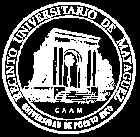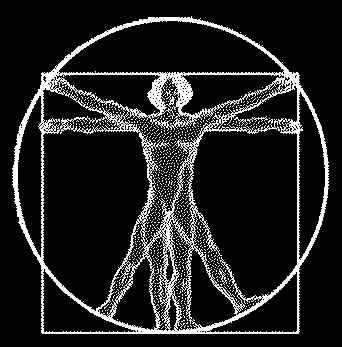|


| |
  University
of Puerto Rico. Mayagüez Campus University
of Puerto Rico. Mayagüez Campus
College of Engineering.
Industrial Engineering
Department
| Dr.
Noel Artiles Information Sheet -
AGO
-
DEC
2000 |
| General Information |
|
Instructor: Noel Artiles-León,
Ph.D.
Title: Professor
Office: Industrial engineering
Building, II-216
Phone: 787-832-4040 ext. 2006
or 787-265-3819
Office Hours: Wednesday, 10:30
a.m. - 12:00 p.m. and 4:30 p.m. - 6:00 p.m.; other times by appointment
E-mail: n_artiles@rumac.uprm.edu
URL: http://www.uprm.edu/winin/n_artiles.htm
and http://www.artiles.iwarp.com
|
| Requirements |
| All students are expected to come to class all
the time, on time, and prepared; do all assigned readings and related
homework; actively participate in class discussions and activities; and
satisfy all assessment criteria to receive credit for the course. This is
a graduate course and, consequently, much of the learning process depends
on your commitment to the subject; I will give weekly assignments and
readings. I do expect that you spend 12-18 hours per week on this
course.
|
|
Instructional Strategy
Lectures: The
professor will spend about 50% of the time lecturing.
Class discussions
are strongly encouraged to provide a deeper understanding about the topics
presented during a lecture. Class discussions should take about 25% of
class time.
Problem solving:
About 25% of class time will be spent on problem solving.
Take-home assignments will
be used for practices, exercises, and drills to enhance the student's
learning experience. These practices should take 6 to 10 hours per week.
Office hours will be used for reviewing class material before midterm
exams and for discussing test solutions. Case studies will be assigned and
solved during the course. In addition, students are required to read a
couple of research papers during the semester.
|
| Evaluations |
|
First partial exam (20%)
..................... Wednesday, October 4, 2000
Second partial exam
(20%)................... Wednesday, November 15, 2000
Assignments and quizzes
(15%).............. Weekly
Project (20%)
Proposal
(3%).................................... Wednesday, September 27, 2000
Progress report
(5%)........................... Wednesday, October 25, 2000
Final report (6%)
.............................. Wednesday (Monday), November 22, 2000
Oral presentations and
(optional) revised final report (6%) Wednesday, Dec. 6, 2000
Comprehensive final exam (25%)
......... Wednesday, December 13, 2000 |
 | Partial exams are optional. If you decide not to
take a partial exam (for any reason or circumstance) the grade that
you get in your final exam will be assigned to the missing exam. The
quizzes, assignments, and the final exam are not optional. |
 | All exams are comprehensive. This means that the
material to be examined on the second test, includes the material
examined on the first one; and that the material to be examined on the
final test, includes the material examined on the first and second
tests. |
|
 | Because the comprehensive nature of the tests, you can replace the
grade obtained on the first test by the average of the first two
tests; for example, if a student takes the first test and gets 60
points (out of 100) and she takes the second test and gets 92 points,
then she may choose to replace the grade in the first test (60) by the
average of these two tests (60+92)/2 = 76. Similarly, you can replace
the grade obtained on the second test by the average of the second and
final tests. |
 | All assignments and reports must include detailed descriptions of
the problems that are being solved. Assignments and reports are graded
based on technical merits and accuracy. You will not get extra credit
for fancy printing or expensive covers; consequently, spend most of
your time addressing technical aspects. |
 | Final grades will be assigned based on a curve that will take into
account: i) the course objectives; ii) the difficulty and complexity
of the assignments, quizzes, and exams; and iii) your relative
performance in the assignments, quizzes, and exams; and your class
participation. |
|
| Deadlines for assignments and reports |
| Assignments must be handed in on the dates
indicated. The grade of late assignments and reports will be lowered by
10% points for each calendar day (or fraction) that they are late.
Assignments already discussed in class, already graded and returned, or
whose solutions had been circulated cannot be handed in.
|
|
Cheating and Plagiarism
Plagiarism is passing off
someone's work as your own with the wilful intention to cheat. Examples of
cheating and plagiarism include copying all or part of an assignment,
report, or exam from a classmate, getting together to work on an
individual assignment, talking to a classmate during an examination, the
use of unauthorized books, notebooks, or other sources during an
examination, the unauthorized copying of examinations, assignments,
reports, or the presentation of unacknowledged material as if it were the
student's own work. Any work submitted by students must be their
own. Cheating, plagiarism, or doing work for another person who
will receive academic credit are all impermissible. In the case of
collaborative work, it is certainly permissible to have appropriate
interactions; however, unless instructions explicitly state otherwise,
students will prepare their own separate and individual assignments,
exams, and reports. Under no circumstances, take-home exams (if any) are
collaborative, and, during the take-home time frame, there will be no
discussion of the exam questions with anyone other than the professor. All
exams and most assignments are supposed to be done individually. Some
assignments are to be done in teams; in these cases, the interaction
within a team is not only appropriate but highly desirable. However,
interaction between teams will be considered plagiarism. If a student
engages in cheating or plagiarism (copying or passing information), he or
she will get an F in the class and will be reported to university
authorities for the proper disciplinary action.
|
| Course Outline and Schedule |
| Week |
Date |
Topic |
Readings |
| 1 |
Aug 16 |
Experimental designs for fitting response
surfaces. Central composite designs. Box-Behnken designs. Geometric
designs |
[H&M] Ch. 1.
[Mont] Secs. 14.1 to 14.4 |
| 2 |
Aug 23 |
Strategies for multiresponse quality
engineering. Case of study |
[Pign] and [Art2] |
| 3 |
Aug 30 |
Evolutionary operations. Organization and
implementation of EVOP programs. Two variable and three-variable EVOP |
[Mont] Sec. 14.6 |
| 4 |
Sep 6 |
Statistical Intervals: Introduction and
assumptions. Overview of different types of statistical intervals. Use of
tables for constructing statistical intervals for a normal population |
[H&M] Chapters 2 and 3 |
| 5 |
Sep 13 |
Computing statistical intervals for a normal
population |
[H&M] Chapter 4 |
| 6 |
Sep 20 |
Distribution-free statistical intervals. Sample
size requirements |
[H&M] Chaps. 5, 8 and 9 |
| 7 |
Sep 27 |
The general mixture experiments |
[Crn2] Ch. 1 |
| The simplex-lattice designs and associated
polynomial models |
[Crn2] Ch. 2 |
| 8 |
Oct 4 |
First partial exam |
|
| 9 |
Oct 11 |
Multiple constraints on proportions; the XVERT
algorithm |
[Crn2] Ch. 3 |
| 10 |
Oct 18 |
The analysis of mixture data |
[Crn2] Ch. 4 |
| 11 |
Oct 25 |
Experiments with a binary response.
Transformations for attribute data Weighted regression. Logistic
regression |
[Nels], [Myer] Secs. 7.1 & 7.4 |
| 12 |
Nov 1 |
Maximum likelihood estimation for grouped and
ungrouped data. Estimation and standard error of the coefficients. Case
study |
[Myer] Sec. 7.4; [Art1] |
| 13 |
Nov 15 |
Second partial exam |
|
| 14 |
Nov 29 |
Experiments with a polytomous variable.
Examples |
Class notes |
| 15 |
Dec 6 |
Project presentations |
|
References
 | Hahn, G. J. and Meeker, W. Q.,1991, Statistical Intervals: a Guide
for Practitioners, John Wiley and Sons, New York. [H&M].
Available at www.BigWords.com; use
B-Code B-2BPMN7 ($112.25). |
 | Artiles-León, N., 1993, Reducing Label Nonconformances by DOE and
Logistic Regression, 47th. ASQC Quality Congress Transactions, Boston, [Art1]. |
 | Artiles-León, N. 1996, "A Pragmatic Approach to Multiple-Response
Problems Using Loss Functions", Quality Engineering. Vol 9 No 2. [Art2]. |
 | Cornell, J. A.,1990, How to Run Mixture Experiments For Product Quality,
ASQC Press, [Crn2] |
 | Montgomery, D.C.,1997, Design And Analysis of Experiments, 4th. Ed., John
Wiley and Sons, New York, [Mont]. |
 | Myers, R.H.,1990, Classical And Modern Regression With Applications, 2nd.
Ed., PWS-Kent Publishing Co., Boston,. [Myer] |
 | Nelson, L.S. Transformation for Attribute Data, Journal of Quality
Technology, 15, pp. 55-56. [Nels] |
 | Pignatiello, J. J. Jr., May 1993, Strategies For Robust Multiresponse
Quality Engineering, IIE Transactions, 25(3), pp. 5-15. [Pign] |
|